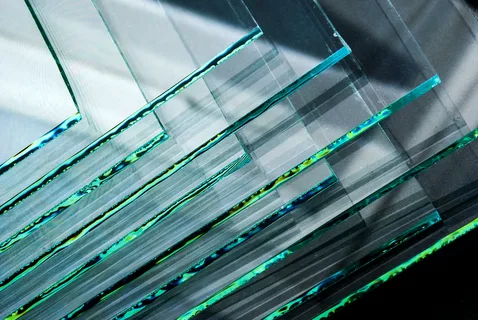TEMPERED GLASS
Tempered glass is a type of safety glass. Original glass is thermally treated to increase its strength, creating a stronger and safer form of glass often needed for most applications. The tempering process is the sudden cooling of the glasses with air by bringing them to temperatures between 600°C and 650°C with heating systems specific to this process.
As a result of the tempering process, compression stress (compression) is applied to the outer surfaces of the glass, and an indirect tensile stress (tension) is gained in the middle of the glass. Thus, the glass becomes resistant to shrinkage and impacts.
SEMI TEMPER
It is produced in the same furnace as Full Tempered glass. It has less surface tension because it is cooled less. Its strength is half that of tempered glass. The Heat Soak test is not applied because the risk of spontaneous breakage is low. When broken, it breaks into larger pieces than full tempered glass.

HEAT SOAK TEST
Tempered glasses are kept at 290 °C for 2 hours. (After the glass reaches 290°C, it should be left for 2 hours). During this firing, if Nickel sulfide particles are present, the phase change accelerates and fracture occurs. If the glass is tested intact, either there is no Nickel sulfide particle in the glass or it is in such a small diameter that it does not pose a risk.
In accordance with EN 14179 “Glass in building – Heat soaked thermally toughened soda lime silicate safety glass” standard, tempered glasses are heated in furnaces at approximately 290 °C. Broken glass is eliminated.
BOMB TEMPER
Curved glass is the process of bending the glass, which is heated heavily until it reaches its melting point, according to the desired radius with a certain air pressure in the cooling furnace. It can also be used as curved laminated or double glazing.
PRODUCT FEATURES
- While normal glass can break into sharp particles after breaking and cause injury, tempered glass breaks into small and blunt pieces when broken. Therefore, the risk of injury is minimized.
- It is 4-5 times more durable than the original glass.
- It has good thermal endurance, can withstand temperature differences.
- While tempered glass can withstand thermal shock of 300°C, untempered glass can break when subjected to thermal shock of approximately 40°C.
- In addition, its thermal shock resistance increases, it can withstand temperature changes up to 150 ~ 200 °C.
- After the glasses become tempered glass, cutting, grinding and chip removal operations cannot be performed on them. The heat treatments do not change the volume, color, clarity and chemical structure of the glass.

